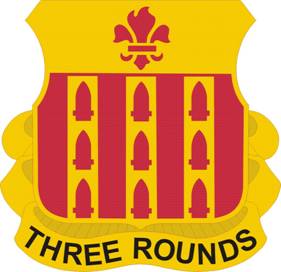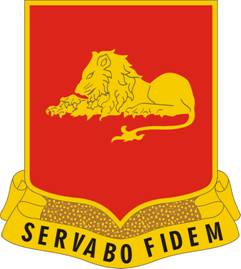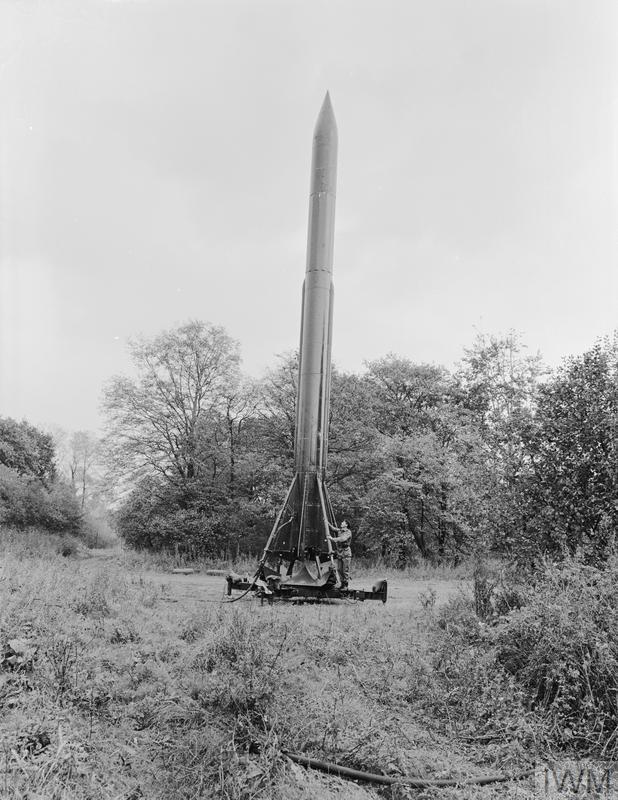|
MGM-52 Lance
The MGM-52 Lance was a mobile field artillery tactical surface-to-surface missile (tactical ballistic missile) system used to provide both nuclear and conventional fire support to the United States Army. The missile's warhead was developed at Lawrence Livermore National Laboratory. It was replaced by MGM-140 ATACMS, which was initially intended to likewise have a nuclear capability during the Cold War. Deployment The first Lance missiles were deployed in 1972, replacing (together with the US-Navy's nuclear-tipped RIM-2D and RIM-8E/B/D) the earlier Honest John rocket and Sergeant SRBM ballistic missile, greatly reducing the weight and bulk of the system, while improving both accuracy and mobility. A Lance battery (two fire units) consisted of two M752 launchers (one missile each) and two M688 auxiliary vehicles (two missiles each), for a total six missiles; the firing rate per unit was approximately three missiles per hour. The launch vehicles were also able to carry and launc ... [...More Info...] [...Related Items...] OR: [Wikipedia] [Google] [Baidu] |
Tactical Ballistic Missile
A tactical ballistic missile (TBM), or battlefield range ballistic missile (BRBM), is a ballistic missile designed for short-range battlefield use. Typically, range (aeronautics), range is less than . Tactical ballistic missiles are usually mobile to ensure survivability and quick deployment, as well as carrying a variety of warheads to target enemy facilities, assembly areas, artillery, and other targets behind the front lines. Warheads can include conventional high explosive, Chemical warfare, chemical, Biological warfare, biological, or nuclear warheads. Typically tactical nuclear weapons are limited in their total yield compared to strategic rockets. Design Tactical ballistic missiles fill the gap between conventional rocket artillery and longer-range short-range ballistic missiles. Tactical missiles can carry heavy payloads deep behind enemy lines in comparison to rockets or gun artillery, while having better mobility and less expense than the more strategic theatre mi ... [...More Info...] [...Related Items...] OR: [Wikipedia] [Google] [Baidu] |
M113 Armored Personnel Carrier Variants
A huge number of M113 Armored Personnel Carrier variants have been created, ranging from infantry carriers to nuclear missile carriers. The M113 armored personnel carrier has become one of the most prolific armored vehicles of the second half of the 20th century, and continues to serve with armies around the world in many roles. Military operators Afghanistan In 2005, Afghanistan received 15 second-hand M577A2 command and control vehicles from the United States. Argentina In 1967, the Argentine Army received from USA 250 M113A1 APC, 10 M577A1 command and control vehicles and 12 M548A1 cargo carriers. In 1992, they received from USA 200 M113A2 APC, 25 M106A1 mortar carrier, 10 M577A1 command and control vehicles and 16 M548A1 cargo carriers. Some variants are modified by the Army's ''Comando de Arsenales''. *M106A2 – M106A1 mortar carrier modified with a 120mm Fabricaciones Militares, FM mortar. *M113 Defensa Aerea – M113 APC with a Oerlikon 20 mm cannon, 20mm Oerlikon G ... [...More Info...] [...Related Items...] OR: [Wikipedia] [Google] [Baidu] |
333rd Field Artillery Regiment
The 333rd Field Artillery Regiment is a regiment of the Field Artillery Branch of the United States Army. Part of the regiment's history can be traced to the 333rd Field Artillery Battalion, an African-American racially segregated United States Army unit during World War II. The battalion landed at Normandy in early July 1944 and saw continuous combat as corps artillery throughout the summer. Beginning in October 1944 it was located in Schoenberg, Belgium as part of the U.S. VIII Corps. The unit was partially overrun by Germans during the onset of the Battle of the Bulge on 17 December 1944. While most of the 333rd FA Battalion withdrew west towards Bastogne, in advance of the German assault, Service and C Batteries remained behind to cover the advance of the 106th Infantry Division. The two batteries suffered heavy casualties, and eleven men were massacred near the Belgian hamlet of Wereth. Batteries A, E, F, and G, all Target Acquisition sub-units, took part in the 1991 Gul ... [...More Info...] [...Related Items...] OR: [Wikipedia] [Google] [Baidu] |
80th Field Artillery Regiment
The 80th Field Artillery Regiment is a field artillery regiment of the United States Army. Distinctive unit insignia * Description A Silver color metal and enamel device 1 3/32 inches (2.78 cm) in height overall consisting of a shield blazoned: Party per fess Or and Gules, a fess dancetté ermine. On a canton Sable an orle of the first (from the coat of arms of the 11th Cavalry). * Symbolism The dual character of the regiment is shown by the colors of the field, yellow for cavalry, red for artillery. The fess dancetté is taken from the arms of the Oglethorpe family, also the boar's head crest, which in addition is the ancient symbol of hospitality. The arms of ancient Brittany was a shield of ermine, and ermine figures prominently in the arms of Vannes; this is shown by the tincture of the fess. The parent organization is shown on the canton. * Background The distinctive unit insignia was originally approved for the 80th Field Artillery Regiment on 14 November 1932. I ... [...More Info...] [...Related Items...] OR: [Wikipedia] [Google] [Baidu] |
79th Field Artillery Regiment
The 79th Field Artillery Regiment is a field artillery regiment of the United States Army. First constituted 1916 in the Regular Army. History Pershing 2nd Missile Battalion, 79th Artillery The 2nd Missile Battalion, 79th Artillery was organized at Fort Sill, Oklahoma, in February 1964. The battalion was to be equipped with the Pershing missile and deployed to South Korea. The battalion underwent operational testing at Fort Wingate, New Mexico and fired missiles on 28 January 1965 and 3 February 1965. The 251st Ordnance Detachment was activated in November 1964 under the Ordnance Guided Missile School at Redstone Arsenal, Alabama and commanded by 2nd Lt. David M. McClellan. The 251st transferred to Fort Sill, Oklahoma, in January 1966 to support the 2/79th. The Korean deployment was placed on hold and the battalion supported missile shoots from the 56th Artillery Group and the two German Air Force squadrons at Black Mesa Test Range, Blanding and Green River Launch Complex ... [...More Info...] [...Related Items...] OR: [Wikipedia] [Google] [Baidu] |
42nd Field Artillery Regiment
The 42nd Field Artillery Regiment is a field artillery regiment of the United States Army, first Constituted 5 July 1918 in the National Army (USA). Lineage Constituted 29 June 1918 in the Regular Army as the 1st Battalion, 42d Artillery (Coast Artillery Corps) Organized 7 August 1918 in France Inactivated 17 August 1921 at Camp Eustis, Virginia Redesignated 1 July 1924 as the 1st Battalion, 42d Coast Artillery Disbanded 14 June 1944 Reconstituted 28 June 1950 in the Regular Army; concurrently consolidated with the 42d Field Artillery Battalion (active) (see ANNEX) and consolidated unit designated as the 42d Field Artillery Battalion, an element of the 4th Infantry Division Relieved 1 April 1957 from assignment to the 4th Infantry Division; concurrently reorganized and redesignated as the 42d Artillery, a parent regiment under the Combat Arms Regimental System Redesignated 1 September 1971 as the 42d Field Artillery Withdrawn 15 January 1996 from the Combat Arms Regime ... [...More Info...] [...Related Items...] OR: [Wikipedia] [Google] [Baidu] |
33rd Field Artillery Regiment
The 33rd Field Artillery Regiment is an inactive field artillery regiment of the United States Army, first constituted in 1918 in the National Army (USA). A parent regiment under the U.S. Army Regimental System, the regiment has no active regiments. The regiment saw active service with the 1st Infantry Division in World War II. The regiment's 2nd and 6th Battalions served in Vietnam. Lineage & Honors Lineage *Constituted 5 July 1918 in the National Army as the 33d Field Artillery and assigned to the 11th Division. *Organized 5 August 1918 at Camp Meade, Maryland. Demobilized 12 December 1918 at Camp Meade, Maryland. *Reconstituted 22 July 1929 in the Regular Army as the 33d Field Artillery and assigned to the 6th Division. *Relieved 1 January 1930 from assignment to the 6th Division. *Redesignated 1 October 1940 as the 33d Field Artillery Battalion, assigned to the 1st Division (later redesignated as the 1st Infantry Division), and activated at Fort Ethan Allen, Vermont. *Relieve ... [...More Info...] [...Related Items...] OR: [Wikipedia] [Google] [Baidu] |
32nd Field Artillery Regiment
The 32nd Field Artillery Regiment is a distinguished and highly-decorated field artillery regiment of the United States Army, first Constituted in 1918. Lineage Constituted in the Regular Army as the 32nd Field Artillery and assigned to the 11th Infantry Division (United States) 5 July 1918. Distinctive unit insignia *Description A gold color metal and enamel device 1 3/16 inches 3.02 cm) in height consisting of the shield, crest and motto of the coat of arms. *Symbolism The shield is red for Artillery. The bordure is in the colors of the corps distinguishing flag to indicate Corps Artillery. The crest represents the West Coast, the present assignment of the regiment; and inasmuch as a demi-sun also has the appearance of a rising sun it may also represent the origin of the organization on the East Coast. *Background The distinctive unit insignia was originally approved for the 32nd Field Artillery, Regular Army Inactive on 9 July 1937. It was redesignated for the 32nd Fi ... [...More Info...] [...Related Items...] OR: [Wikipedia] [Google] [Baidu] |
Fort Sill
Fort Sill is a United States Army post north of Lawton, Oklahoma, about 85 miles (136.8 km) southwest of Oklahoma City. It covers almost . The fort was first built during the Indian Wars. It is designated as a National Historic Landmark and serves as home of the United States Army Field Artillery School as well as the Marine Corps' site for Field Artillery MOS school, United States Army Air Defense Artillery School, the 31st Air Defense Artillery Brigade (United States), 31st Air Defense Artillery Brigade, and the 75th Field Artillery Brigade (United States), 75th Field Artillery Brigade. Fort Sill is also one of the four locations for Army United States Army Basic Training, Basic Combat Training. It has played a significant role in every major American conflict since 1869.Janda, Lanceof Oklahoma History and Culture''. "Fort Sill."Retrieved 16 December 2013. History The site of Fort Sill was staked out on 8 January 1869, by Maj. Gen. Philip H. Sheridan, who led a campaign ... [...More Info...] [...Related Items...] OR: [Wikipedia] [Google] [Baidu] |
12th Field Artillery Regiment
The 12th Field Artillery Regiment is a unit of the United States Army. Distinctive insignia Description and symbolism The unit's insignia is a gold color metal and enamel device 1 inch (2.54 cm) in height overall consisting of a shield blazoned: Gules, a Fleur-de-lis Argent crowned Or; on a canton of the like an Aztec banner Vert garnished of the second. The single fleur-de-lis of silver is taken from the arms of Soissons, where the regiment performed such distinguished service that it was cited by the French in Orders of the Army, shown by the pendant Croix de guerre. The regiment had its baptism of fire near Verdun, the arms of which have one fleur-de-lis crowned all gold. The crown on these arms is for Verdun. The canton carried the Aztec banner from the crest of the parent organization, the 3rd Field Artillery Regiment. The distinctive unit insignia was originally approved for the 12th Field Artillery Regiment on 17 April 1923. It was re-designated for ... [...More Info...] [...Related Items...] OR: [Wikipedia] [Google] [Baidu] |
MGM-52 Operators
The MGM-5 Corporal missile was a nuclear-armed tactical surface-to-surface missile. It was the first guided weapon authorized by the United States to carry a nuclear warhead. A guided tactical ballistic missile, the Corporal could deliver either a nuclear fission, high-explosive, fragmentation or chemical warhead up to a range of . It was developed by the United States Army in partnership with Caltech's pioneering Jet Propulsion Laboratory, and initially produced by Douglas Aircraft Company. As development continued production shifted to Firestone Tire and Rubber Company (airframe) and Gilfillan Brothers Inc. (guidance). The Corporal was designed as a tactical nuclear missile for use in the event of Cold War hostilities in Western Europe. The first U.S. Army Corporal battalion was deployed in Europe in 1955. Eight Corporal battalions were deployed in Europe and remained in the field until 1964, when the system was replaced by the solid-fueled MGM-29 Sergeant missile system. Th ... [...More Info...] [...Related Items...] OR: [Wikipedia] [Google] [Baidu] |
Chemical Weapon
A chemical weapon (CW) is a specialized munition that uses chemicals formulated to inflict death or harm on humans. According to the Organisation for the Prohibition of Chemical Weapons (OPCW), this can be any chemical compound intended as a weapon "or its precursor that can cause death, injury, temporary incapacitation or sensory irritation through its chemical action. Munitions or other delivery devices designed to deliver chemical weapons, whether filled or unfilled, are also considered weapons themselves." Chemical weapons are classified as weapons of mass destruction (WMD), though they are distinct from nuclear weapons, biological weapons, and radiological weapons. All may be used in warfare and are known by the military acronym NBC (for nuclear, biological, and chemical warfare). Weapons of mass destruction are distinct from conventional weapons, which are primarily effective due to their explosive, kinetic, or incendiary potential. Chemical weapons can be widely dispe ... [...More Info...] [...Related Items...] OR: [Wikipedia] [Google] [Baidu] |










